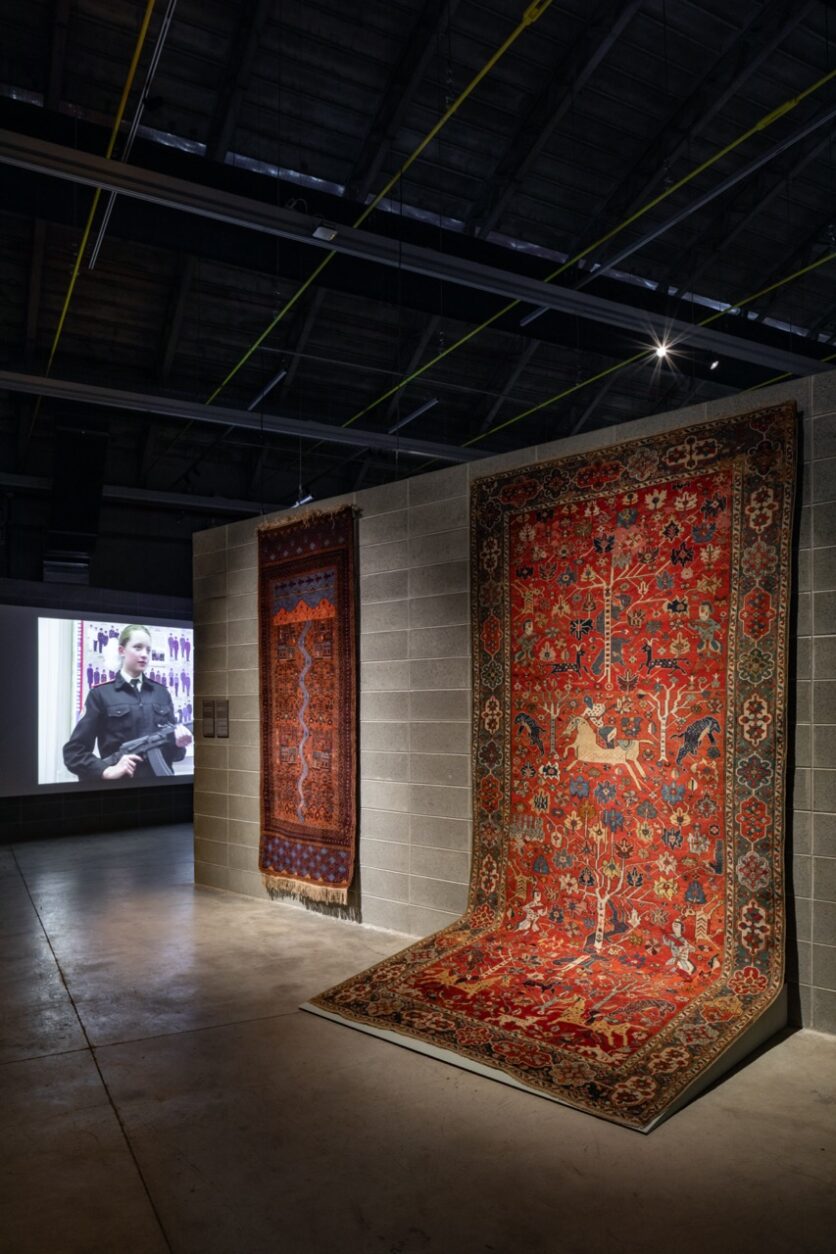In the expansive post-industrial space of over 2,000 square meters that hosts de bello. notes on war and peace in Bergamo, art is not merely testimony—it is a cry, a record, a ruin, and a hope. The first group exhibition promoted by gres art 671, curated by Francesca Acquati and 2050+, stages a journey through seven centuries and across multiple geographies to explore war through the oblique yet essential lens of artistic expression.
Featuring over 30 artists—from Joseph Beuys to Marina Abramović, Burri to Kiefer, Claire Fontaine, Maja Bajević, and collectives such as Total Refusal—the exhibition avoids documentary narration. Instead, it seeks to evoke, stir, and question. Many of the works are new or never before exhibited, spanning a wide range of media: painting, installation, video, photography, textiles, performance, and video games. War is examined not only as historical fact or trauma, but as a present and lived condition, from Ukraine to the Middle East to Latin America.
The exhibition unfolds across five thematic sections: Apparent Peace, Alarm, War, Rubble, Resistance tracing a crescendo of emotional responses that aim to define the universal experience of conflict.
The exhibition design by Milan-based studio 2050+ is not just a backdrop, but a fundamental part of the curatorial narrative. Known for their transdisciplinary approach at the intersection of architecture, design, and media, 2050+ has crafted a spatial experience that intensifies the emotional and perceptual impact of the works on display.
The installation is envisioned as a monochrome wallscape, built entirely from prefabricated concrete bricks. Grey, opaque, and raw, these elements conjure the image of fragmented domestic spaces—abandoned dwellings, ruins, or future construction sites. The walls, varying in height and density, organize the exhibition’s rhythm and suggest fractured, nonlinear visual pathways, mirroring the themes of war and trauma.
This stark and minimal design becomes an architectural metaphor for conflict: the destroyed home, the improvised shelter, but also the enduring wall, the place of protection, the potential for rebuilding. A gesture that distills the essence of the project: to speak of destruction, but also of possibility, of collapse—but also of care.
As Roberto Pesenti, president of gres art 671, affirms: “de bello expresses a desire to use art as testimony, provocation, and above all, as inspiration for peace.” In this sense, the installation by 2050+ is not just a container, but a languageand a stance. In today’s fragile and complex geopolitical landscape, de bello reminds us that art—and the way we frame and experience it—can still serve as a tool for collective awareness and a form of spatial resistance in the architecture of the present.
For further info: www.2050.plus
CREDITS:
Project: de bello. notes on war and peace
Architect: 2050+
Location: Bergamo, Italy
Year: 2025
Photography: Diego De Pol













